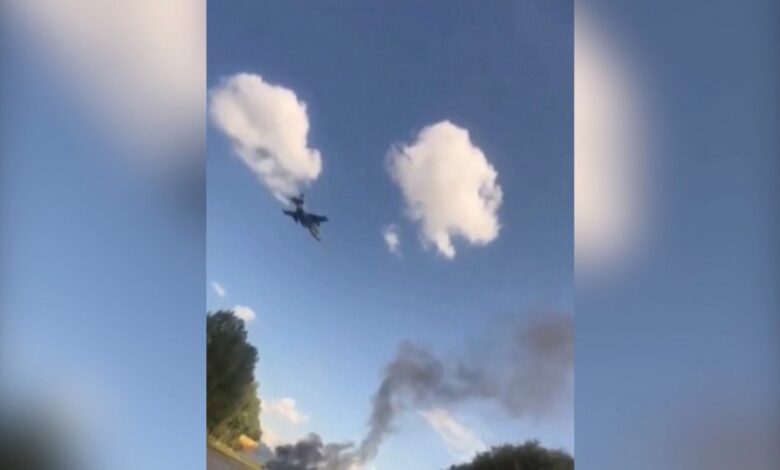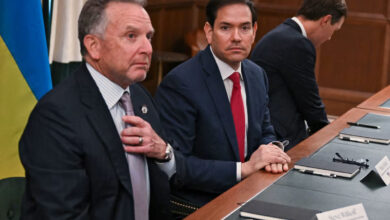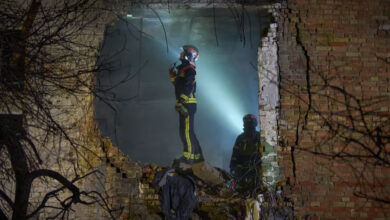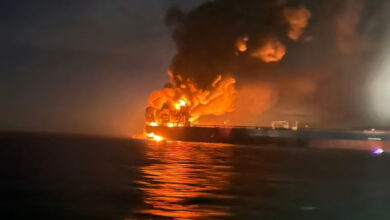
The Russian Ministry of Defense, the Russian Investigative Committee and the Russian Ombudsman for Children all said Ukrainian forces had launched a “massive attack” on Tuesday, attempting to break through the Russian defenses on the borders of the Kursk region, which sits just north of Ukraine’s Sumy region.
Russian President Vladimir Putin called the alleged incursion a “large-scale provocation,” saying Kyiv conducted “indiscriminate shooting from various types of weapons, including missiles, at civilian buildings, residential buildings, and ambulances.”
Ukrainian authorities did not comment on the claims and CNN cannot independently verify them.
The extent of the attack, including whether Ukrainian troops took over any settlements or caused damage to any strategic targets, remains unclear. It is also not clear whether any Ukrainian soldiers remained on Russian territory.
Russian authorities and military bloggers said Ukrainian forces attacked by land and air to enter Russia near the town of Sudzha, a town of 5,000 that lies about 6 miles (10 kilometers) from the border.
The Russian Ministry of Health says that 31 people, including six children, were injured as a result of Ukrainian shelling in the Kursk region.
The mayor of the town, Vitaly Slashchev, described a “very tense” atmosphere, telling Russian state news agency RIA Novosti: “There is no time to talk, many people are calling about evacuation.”
The available geolocated videos do not indicate that Ukrainian troops have entered the town. Slashchev had earlier told state news outlet RT that the town was not under the control of the Ukrainian Armed Forces.
Border guards were “putting up serious resistance to the advancing enemy troops,” according to one unofficial Russian Telegram channel, Dya Mayora. “Unfortunately, enemy reconnaissance groups are penetrating further,” the post added.
CNN is unable to confirm the account, but geolocated video shows that parts of Sudzha have been heavily shelled. Drone footage geolocated by CNN shows some 20 men who appear to have surrendered at the heavily damaged border crossing south-west of Sudzha.
CNN is unable to confirm the identity of those shown in the video. Sternenko, an unofficial Ukrainian social media channel that distributed the video, said it showed at least 22 Russian soldiers “surrender” in the Kursk region.
The acting governor of Russia’s Kursk region, Aleksey Smirnov, says he has “decided to introduce an emergency situation in the Kursk region from August 7th.” He added in a Telegram post that the “operational situation in the border areas remains difficult. To eliminate the consequences of the entry of enemy forces into the territory of the region, I decided to introduce an emergency situation.”
It came after the Russian Ministry of Defense said that about 300 troops, supported by tanks and armored vehicles, attacked Russian positions near the villages of Nikolayevo-Daryino and Oleshnya.
Initially, the ministry said the attack was repelled, but that statement was later corrected to say that “the enemy is being inflicted with fire damage.”
Later on Wednesday, state news agency RIA Novosti quoted the Chief of the General Staff of the Russian Armed Forces Valery Gerasimov as telling Putin that “the advance of the Ukrainian Armed Forces deep into Russian territory has been stopped.”
Aleksey Smirnov, the acting head of Kursk region, said Wednesday that several thousand people left the area over the past 24 hours.
On Wednesday, the Russian National Guard said it has strengthened security measures at a nuclear power plant in the region. Rosgvardia said in a Telegram post that “within the framework of ensuring security of a particularly important guarded facility, Rosgvardia units took additional measures to protect the Kursk nuclear power plant.”
The plant is about 50 kilometers north of where clashes and shelling are taking place around the town of Sudzha.
It is unclear why Ukrainian forces would launch an attack of the scale described by Russian authorities.
Ukrainian troops have found themselves under increased pressure along the 600-mile frontline as Moscow continues its slow, grinding offensive, so it could be an attempt to divert Russian resources elsewhere. Given the spate of more negative developments from the frontline, the news of a successful incursion help Kyiv boost the morale of its troops and civilian population.
A Russian military blogger Rybar reported that the Ukrainian military had established control over a gas transit station near the border. The blogger said the station is the only one through which gas from Russia flows to Ukraine and then to Europe. CNN cannot confirm that reporting.
The European Union has imposed wide-ranging economic sanctions on Russia – with the exception of key natural gas imports. The EU was dependent on Russian gas and while it has slashed imports from Russia from 45% of all gas imports in 2021, to 15% of EU gas imports in 2023, some Russian gas still continues to flow to Europe through Ukraine, despite the war.
If confirmed, the attack would be a major development in the conflict – even if its immediate impact is limited.
While there have been reports of pro-Ukrainian sabotage groups crossing into Russia, none have caused significant damage. The Ukrainian military has regularly attacked targets inside Russia with drones and missiles, but Kyiv has not launched any official ground incursions across the border in the two and half years since the start of the full-scale war.
The Institute for the Study of War, a US-based conflict monitoring group, said it had geolocated footage published on August 6 that shows damaged and abandoned armored vehicles roughly 4.3 miles (7 kilometers) north of the border, but said it could not confirm if they were Russian, Ukrainian or both.
Russian forces have meanwhile been inching toward the strategically important city of Pokrovsk in eastern Ukraine, threatening a vital Ukrainian supply line. At the same time, Russian forces claim to have seized the village of Niu York and are getting closer to Toretsk.
CNN’s Olga Voitovych, Tim Lister, Nick Paton Walsh and Paul Murphy contributed reporting.




